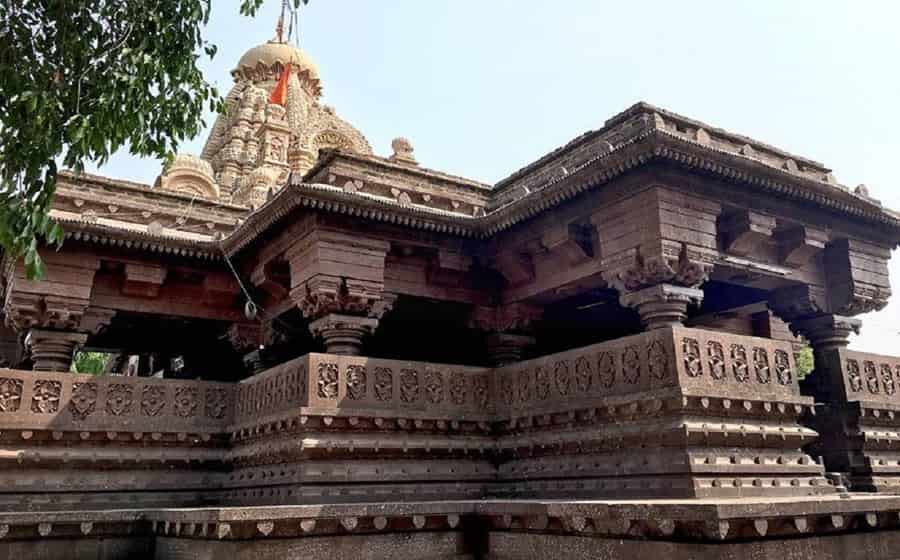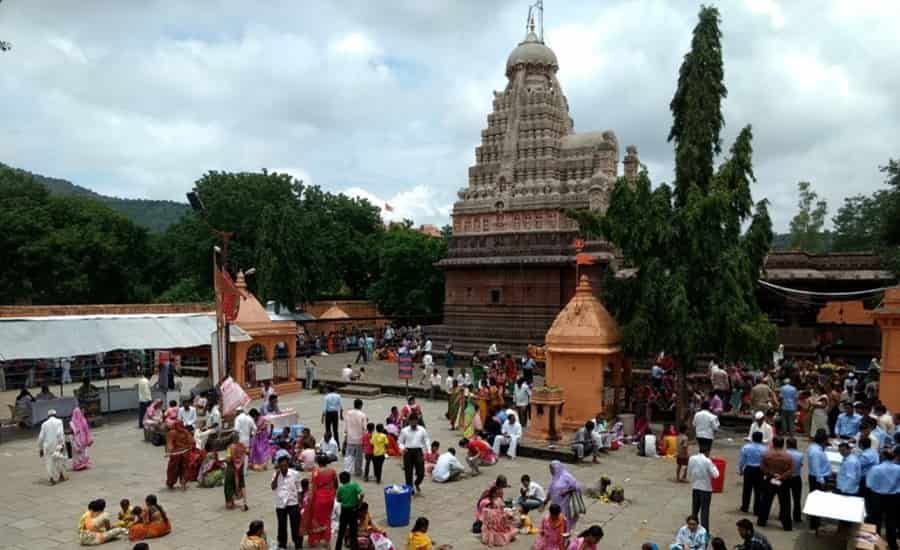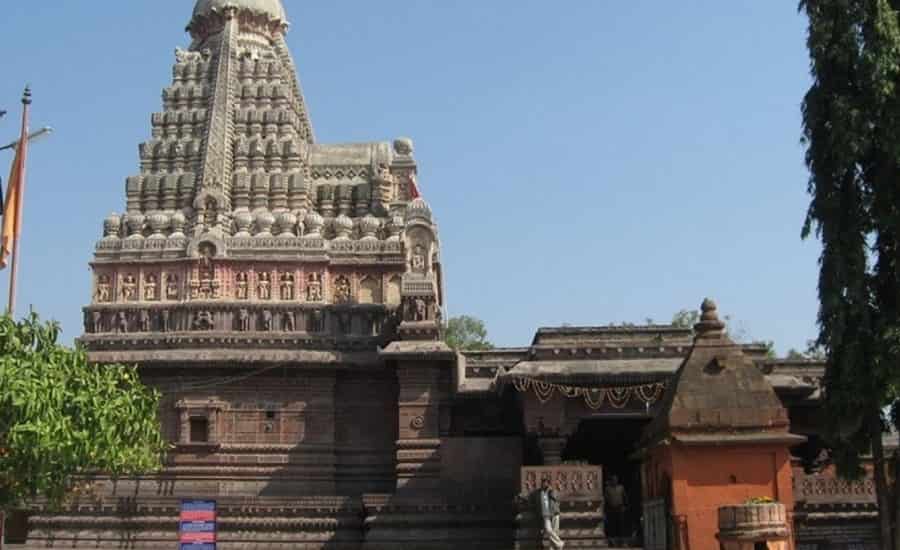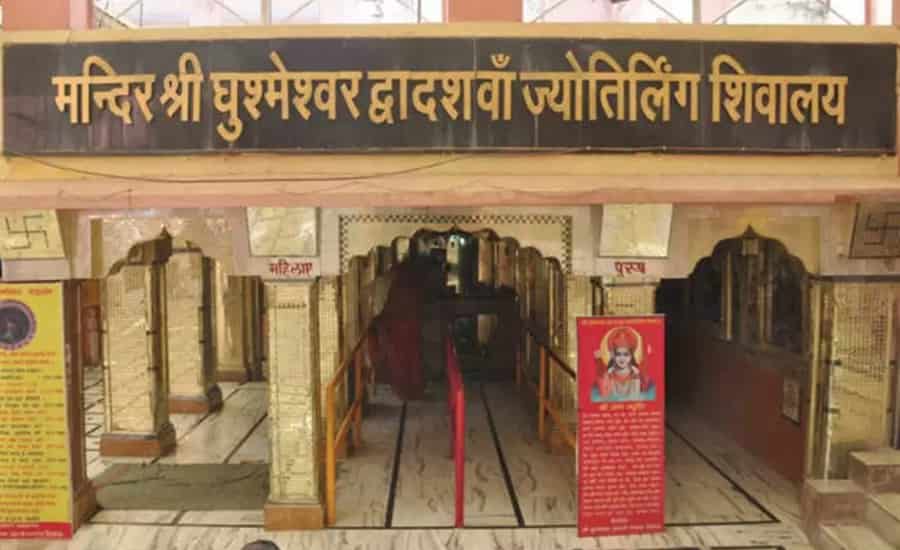Grishneshwar Temple is a blissful abode of Lord Shiva. It is one of the 12 Jyotirlingas of lord Shiva which is of great spiritual importance for Hindu devotees. It is just 2km away from UNESCO Heritage Site Ellora Cave of…
Grishneshwar Temple
- Location: Verul, Aurangabad District
- Alternate Names: Grishneshwar Jyotirlinga Temple, Dhushmeshwar Temple
- Type: Hindu Temple
- Significance: 12th Jyotirlinga, dedicated to Lord Shiva
- Operating Hours: 5:30 am to 11:00 pm daily; extended hours during Shravan month (August-September)
- Entry Fee: Free
- Prohibited Items: Mobile Phones, Cameras, Food items, Belts
- Architecture: Traditional South Indian style with a five-tier shikhara
- Key Features:
- Sacred Shiva Linga
- Court hall with mythological carvings
- Dashavataras (ten forms of Vishnu) depicted on red stones
- History: Origins trace back before the 13th century; rebuilt in the 18th century by Rani Ahilyabai Holkar
- Devotional Practices: Men traditionally enter bare-chested; Mahashivratri festival celebrated annually
- Nearby Attractions: Ellora Caves, Ellora Digamber Jain Temple, Tomb of Malik Ambar, Bhadra Maruti Temple, Tomb of Aurangzeb, Mughal Silk Bazaar, Daulatabad Fort
Grishneshwar Temple, also known as Grushneshwar Jyotirlinga, is one of the 12 sacred temples dedicated to Lord Shiva, and it holds immense religious significance in Hinduism. This temple is situated in the state of Maharashtra, India, near the Ellora Caves, which are renowned for their rock-cut architecture.
Here is some essential information about Grishneshwar Temple:
Location: Grishneshwar Temple is located in the village of Verul in the Aurangabad district of Maharashtra, approximately 20 kilometers from the city of Aurangabad.
Historical Significance: This temple is considered one of the holiest shrines for Lord Shiva devotees. It is believed to be the site where Lord Shiva self-manifested as a Jyotirlinga (a radiant column of light) to answer the prayers of a devout sage named Grishneshwar. The temple is also mentioned in ancient Hindu scriptures and texts.
Architecture: The temple features a classic example of medieval Hindu temple architecture, with intricate carvings and beautiful stone work. It has a Hemadpanthi style of architecture, which is typical of many ancient temples in Maharashtra.
Main Deity: The primary deity in the Grishneshwar Temple is Lord Shiva, in the form of a Jyotirlinga. The lingam is encased in a sanctum sanctorum and is worshipped with great reverence by devotees.
Significant Festivals: Maha Shivaratri is the most significant festival celebrated at Grishneshwar Temple. During this time, devotees from all over the country visit the temple to offer prayers and seek the blessings of Lord Shiva. Other festivals like Ganesh Chaturthi and Makar Sankranti are also celebrated with enthusiasm.
Visiting Hours: The temple is usually open from early morning to late evening, allowing devotees and tourists to visit and pay their respects to Lord Shiva. The exact opening and closing times may vary with the seasons.
How to Reach: The temple is easily accessible by road. It’s situated about 20 kilometers from Aurangabad, which is well-connected by air, rail, and road. Tourists and pilgrims can hire local transport or use public buses to reach the temple.
Accommodation: There are various accommodation options available in Aurangabad for those planning to visit the Grishneshwar Temple, ranging from budget hotels to more luxurious options.
Nearby Attractions
Visiting Grishneshwar Temple provides access to multiple sites of historical and cultural importance along with spiritual satisfaction. The following list shows the main sites you must see when you visit:
Ellora Caves (1 km away)
Travelers can easily reach Ellora Caves by walking or driving from the temple grounds to experience this UNESCO World Heritage Site built into the ancient rock surfaces by ancient craftsmen. The complex contains 34 cave sanctuaries which include Buddhist, Hindu and Jain religious monuments carved out of the hillside while Cave 16 Kailasa Temple shows its glory as the largest monolithic Shiva temple.
Daulatabad Fort (15 km away)
The 14th-century Daulatabad Fort commands a position on the top of a conical hill through its impressive defensive characteristics and highly strategic construction. The powerful fort which was known to be one of India’s most formidable defensive structures provides breathtaking views of the area while also featuring strategic entrance mazes meant to deceive attackers.
Bibi Ka Maqbara (30 km away in Aurangabad)
The Mughal-style architectural masterpiece serves as the main attraction in Aurangabad where people call it the ‘Taj Mahal of the Deccan’. This structure was built by Aurangzeb’s son to commemorate his mother’s memory. Aurangabad residents consider Bibi Ka Maqbara one of their prettiest locations because of its white dome architecture and symmetrical gardens which attract both photographers and history enthusiasts.
Panchakki (30 km away in Aurangabad)
Panchakki stands as a working water mill from the 17th century that demonstrates remarkable structural achievements of the medieval age. Grain for pilgrims and monks received power from a nearby spring through underground water channels as the structure served to grind grain. Today visitors find comfort at this location due to its peaceful gardens and tiny Dargah near the structure.
Grishneshwar Temple is not only a significant religious site but also a place of historical and architectural interest. It attracts devotees and tourists alike who come to experience the spiritual and cultural richness of this sacred place.
Grishneshwar Temple Timings and Rituals
Located near Aurangabad district’s Ellora Caves in Maharashtra, Grishneshwar Temple maintains great religious significance because it represents the twelfth and final Jyotirlinga dedicated to Lord Shiva. Thousands of devotees make religious pilgrimages to this temple every year because it serves…
Best Time To Visit Grishneshwar
Grishneshwar, a small village located in the Indian state of Maharashtra, is a place of great religious significance for Hindus. It is home to the revered Grishneshwar Jyotirlinga Temple, one of the 12 sacred shrines dedicated to Lord Shiva. Apart…
History Of Grishneshwar Temple
Grishneshwar Temple, also known as the Grishneshwar Jyotirlinga Temple, is a revered Hindu religious site located in the village of Verul in the Ellora Caves complex, in the Indian state of Maharashtra. Dedicated to Lord Shiva, this temple is not…





 Call
Call WhatsApp
WhatsApp Enquiry
Enquiry